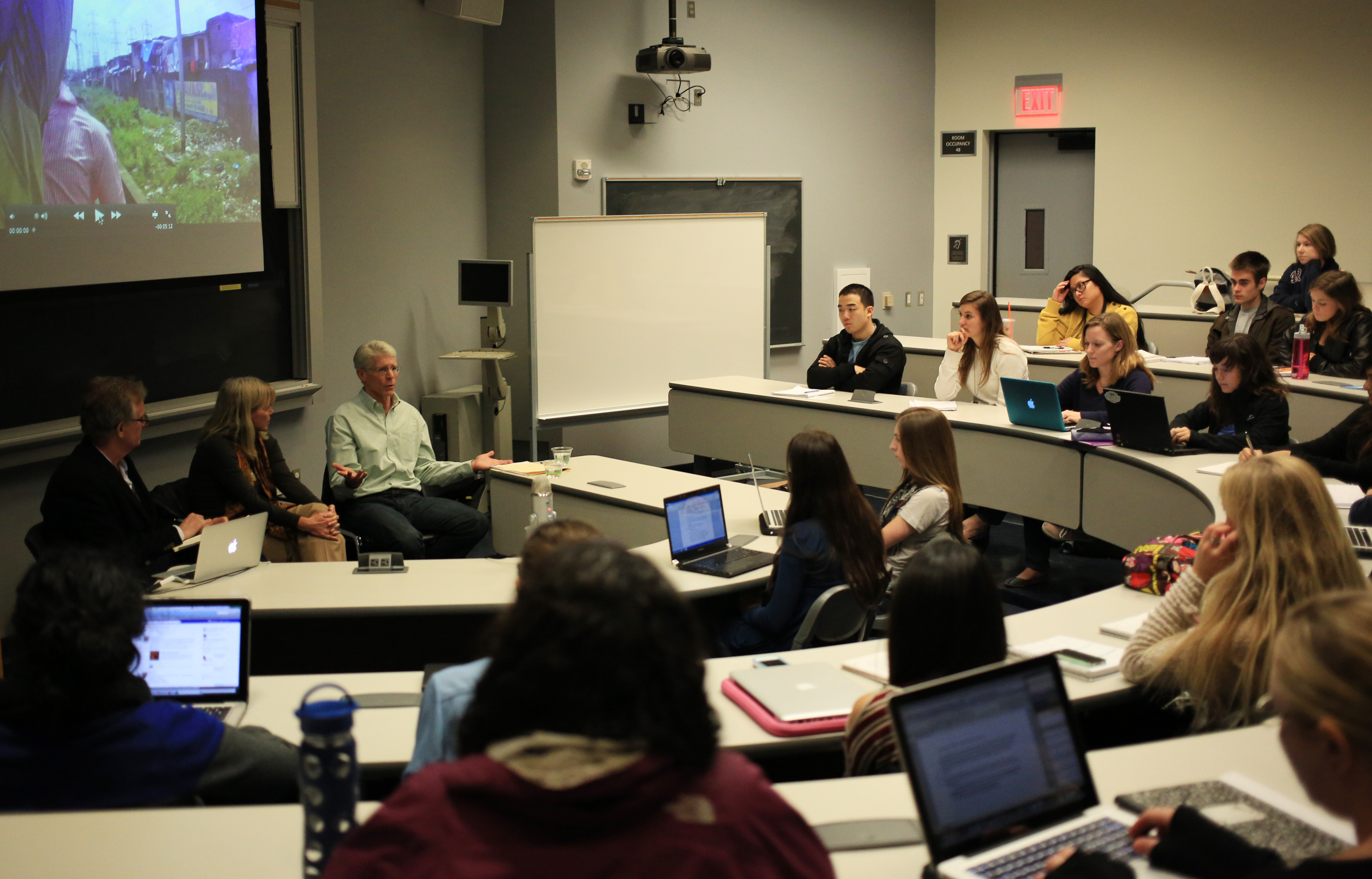New UCLA course stresses environmental communication

The Institute of the Environment and Sustainability’s new class explores the intersection between the environment, journalism and new media.
By Kanav Saraf
Jan. 15, 2013 12:55 a.m.
A new class being offered this quarter at the UCLA Institute of the Environment and Sustainability will teach students how to integrate new media – like blogs, videos and podcasts – into environmental science.
The class, Environment 150: Environmental Journalism, Science Communications, and New Media, aims to give students the opportunity to understand the social sciences, economics and problems involved in environmental communication, said Jon Christensen, adjunct assistant professor and Pritzker fellow in the Institute of the Environment and Sustainability with a focus on history. He came from Stanford University to teach the course as part of the Institute of the Environment and Sustainability’s effort to focus more on environmental communication.
Even though he designed and put together the course in the last six months, its topic is not new for him. He has worked in the field for about 30 years as an environmental journalist and has contributed science articles to The New York Times and environmental science magazines.
“I am a historian and a journalist – so basically a storyteller,” Christensen said.
Through his course, Christensen said he wants students to understand the central role of communication in four basic environmental challenges: climate change, urbanization, biodiversity and ecosystem sustainability.
One of the themes of the course is understanding what it means to live in the Anthropocene, a term some scientists use to describe the current geological era where humans dominate the Earth’s physical and biological systems so much so that they are already leaving an imprint on the fossil record, Christensen said.
Many students who want to work in the environmental sector have good ideas but do not know how to get those ideas out there, said Glen MacDonald, director of the Institute of the Environment and Sustainability.
The class features guest speakers like journalists, web producers, scientists and activists, many of whom are friends and colleagues of Christensen. He said he encourages the guest speakers to teach the students how to tell effective stories in the medium in which the guests work and how forms of media are changing.
Laina Petrinec, a third-year environmental science student, said she is taking the class to break up a math and science-heavy schedule. When she stumbled upon the course on the UCLA Registrar’s Office website, she said she immediately decided to take it. She said she wants to learn about new ways to communicate science effectively to greater masses of people and not just scientists.
Christensen said he hopes the class will teach students how living in the Anthropocene era changes how environmental challenges are perceived, through the lens of journalism.
Petrinic, who wants to improve her science writing, said she is enjoying the class so far.
“I learned a lot from the guest speakers, but the class time went by so fast I wished that we had more time,” she said.
As projects, students have an option between “traditional written papers” – essays and reports – or media productions like videos, blogs, audios, podcasts or social media campaigns. MacDonald said he thinks with Los Angeles’ status as a media hub of the world, UCLA is in a position to make an impact in the field of environmental studies with more classes like the one being offered this quarter.
Los Angeles is a global city, home to people who come from different cities and speak many different languages, Christensen said. This makes UCLA a laboratory for understanding those cultural differences, he added.
“And if we understand (the cultural differences), we can put together very powerful and new ways of communicating environment and sustainability issues – because we are reaching (out) to people where they are,” he said.
Environment 150 will be offered once every academic year, though the department hopes to offer courses about communication and the environment in the future, MacDonald said.

